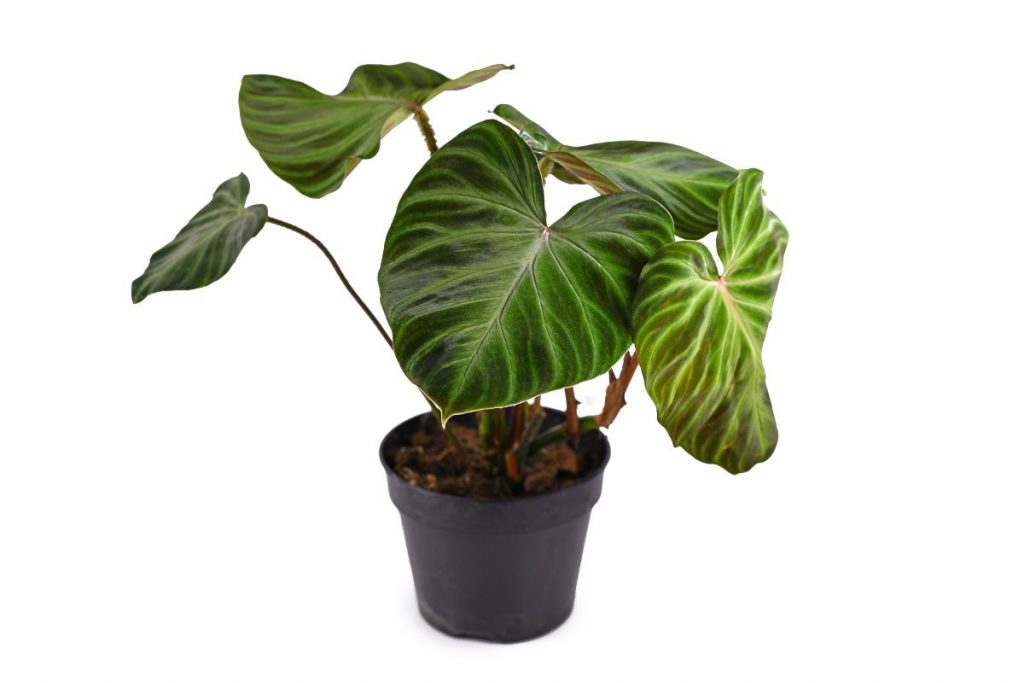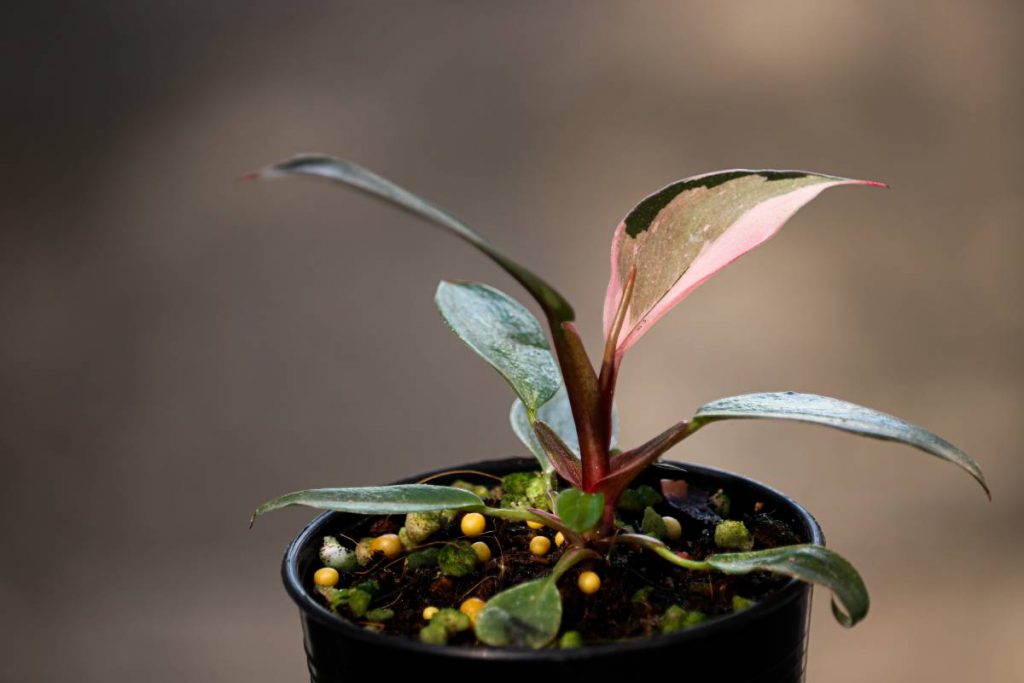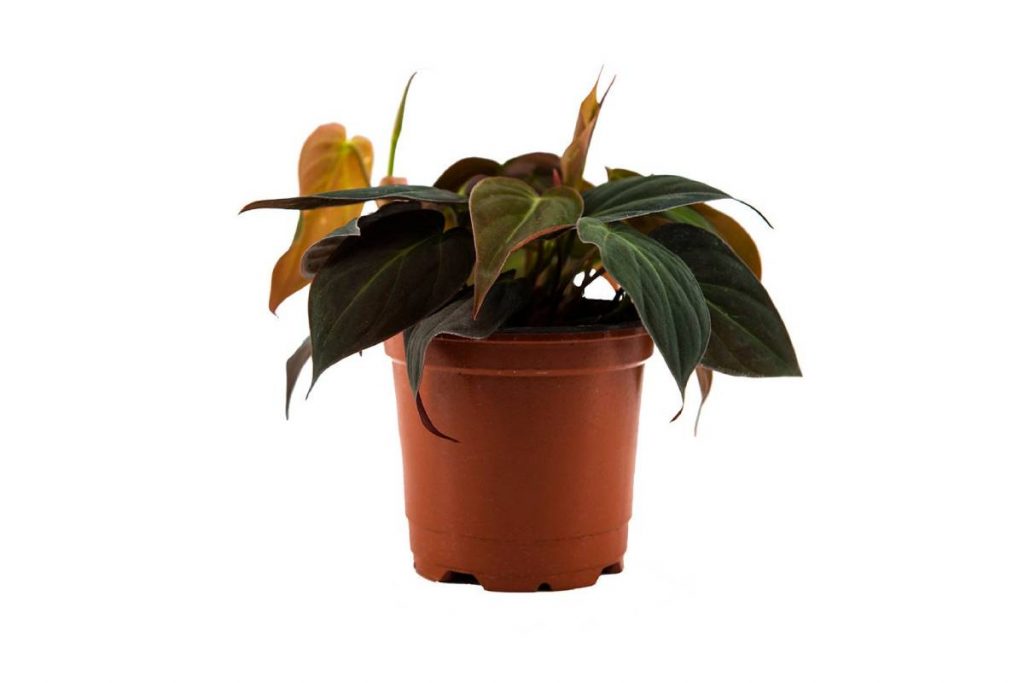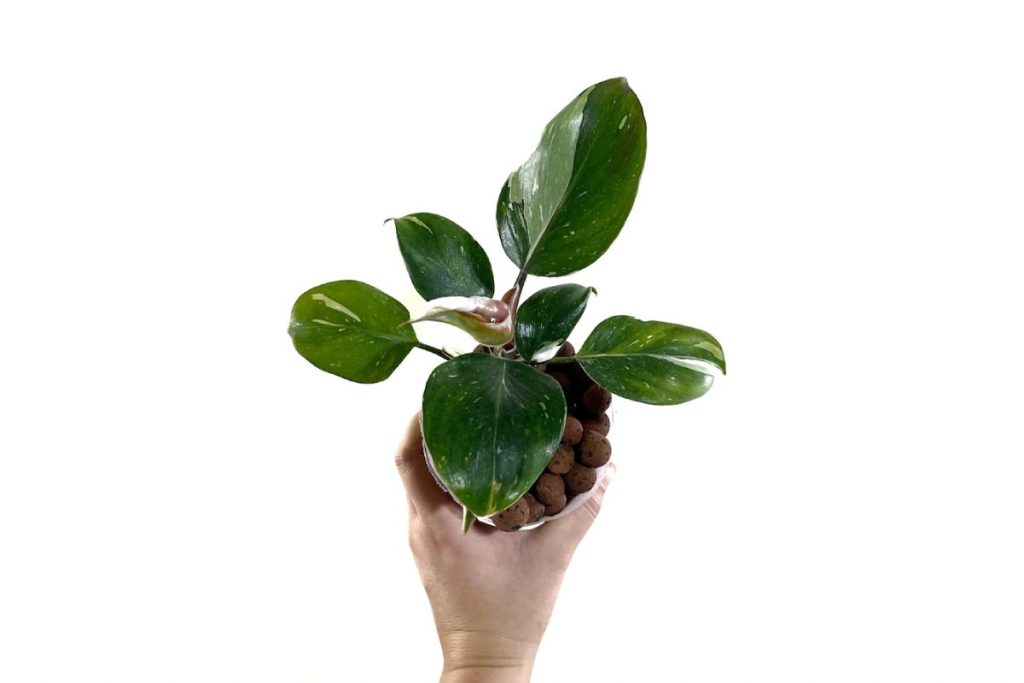Featuring heart-shaped leaves and a beautiful climbing appearance, philodendron verrucosum has become one of the most appreciated plants on the market today. It looks exotic, it looks good and it is fairly simple to look after, whether you are a gardener or you simply want a beautiful plant to improve the appearance of your living room. Care does require some very specific considerations though, so you need to be careful.
Compared to other philodendron plants, this is probably the most stylish one out there. Its green leaves have beautiful golden nuances and will definitely stand out in the crowd. On the same note, if you truly look after your plant, it will grow fast and turn your environment into a clean and fresh jungle. Generally speaking, these plants are Hemi epiphytes, meaning they initially grow as epiphytes clinging to cling to surrounding support.
What is Philodendron Verrucosum?
Philodendron verrucosum has velvety leaves that stand out. It grows in trees, but it will grow down until it reaches the soil with its actual roots. Such plants – semi epiphytes – grow as epiphytes in the early stages of their lives. They grow by attaching themselves to trees or something else around them, only to reach the soil and forget about this type of growth.

There are more varieties of philodendron verrucosum out there. While they are quite similar in nature, there are small differences between them too. Two forms of philodendron verrucosum are distinct though. The plant with red on the back of the leaves is among the popular ones, but the one with a perfectly green backside is also pretty common.
Some of these species feature hairy leaves. Some others have them shaped like hearts – these ones are among the most popular ones. Even after the plant reaches the soil and pushes its roots through, it will still grow vertically, towards the sky. It will never grow along the surface unless you force it to. The plant is native to South and Central America and can be found in Eduador, Peru, Colombia and Costa Rica, among others.
How to Care Philodendron Verrucosum?
Just like every plant out there, philodendron verrucosum has some specific requirements in terms of growth. Give it the optimal conditions and it will thrive. Compared to other similar plants, it is a bit more difficult to look after. However, a little attention will make maintenance a breeze, so here is everything you need to know.
Light
Philodendron verrucosum requires plenty of light. However, keep it away from direct light. Indirect light or filtered light is ideal for the climber. Bright indirect light means the plant should be exposed to the light coming through a window, yet the direct sunlight should not touch it directly – it is likely to harm the plant when it hits the leaves directly.
How do you achieve these conditions? Fairly simple. Identify the east and place it close to a window that is facing east. While there will be a bit of direct sunlight in the morning, it will not be too harsh or intense. Once the morning is over, the plant will get lots of indirect light throughout the day, which is what it needs to thrive.
Water
Philodendron verrucosum grows in tropical areas and the jungles of Central and South America, meaning you should try to mimic such conditions if you can. Water it thoroughly to provide the natural conditions of a jungle. As a general rule of thumb, the soil should be kept humid at all times, but make sure it does not go soggy.
Make sure the soil never goes completely dry. You may find such recommendations in old-school plant care guides or books. It used to be a misconception only. Modern care techniques show that philodendron verrucosum will suffer if the soil dries out completely, so your plant might need a few watering sessions on a daily basis.
Dry soil is like a shield. Getting it entirely humid again could be tricky. It is a shield around the roots, so it will prevent humidity from reaching them. With the optimal substrate, you should not have too many issues keeping the roots healthy. Other than that, make sure you give it lots of water and it will be thankful for it.
Exaggerating is another common issue, so you need to be cautious. Maintaining the wrong soil or having a wrong watering schedule can lead to root rot.
Soil
Having the right soil for your philodendron verrucosum is critical. This is one of the first things you should pay attention to. Having the wrong potting soil – just random soil – will lead to a bunch of problems caused by stress. If your plant shows signs of stress, chances are it will die soon, so you need to act quickly.
Getting the optimal potting mix is essential, especially for plants in the Aracaea family – many species in this range are epiphytes. Roots require good aeration, so direct airflow might be an option sometimes. How do you achieve it? Simple – get the right soil. It must be quite airy and it should drain with no problems at all.
Airy soil means the ingredients are relatively chunky, rather than packed together. They should allow air to go through – small pockets between large chunks will also help. There are more options out there that will work, but some of them are better – for example, you can get 10% charcoal, 30% potting soil, 30% perlite and 30% orchid bark.
As for the pH value, it should be between 5.1 and six – you can find various testers out there to ensure you keep it at the right value.
Temperature
Philodendron verrucosum comes from a tropical environment, so it is used to high temperatures. As long as it is over 68 degrees F, you should be alright. If the temperature goes too high – such as above 77 degrees F – and there is plenty of humidity, your plant will grow much faster than normal. Some species like warmth more than others.
Some species will also grow well in colder temperatures. The plant is more common at high altitudes – anywhere between 165 and 6,550 feet above sea level. Plants growing at high altitudes are obviously used to lower temperatures and will thrive in such conditions. These are the types of temperatures you normally find in its native environment.
Humidity
In terms of humidity, there is no such thing as too much of it. Your philodendron verrucosum will love such an environment. Generally speaking, you should aim for 60% or more and your plant will grow at the optimal speed rate and the maximum possible height.
After all, the plant prefers tropical and subtropical conditions in the wild. While 60% humidity is desired, going higher than that will help it grow even faster. If you live in a hot climate and the humidity is over 90%, your plant will thrive.
Fertilizing
Fertilizing your philodendron verrucosum is highly recommended. You should fertilize away from its base about three times a year – even more. For best results, opt for a slow-release fertilizer, as it will feed the plant continuously over a longer period of time.
Slow-release fertilizers are solid and come in various forms. You can find sticks for example, but you can also find small balls. No matter what shape it has, it will need to go into the soil and it will release nutrients from the plant.
Your philodendron verrucosum can do without a fertilizer too. However, it will grow much slower than normal. It may not be able to reach the optimal size either, so a regular feeding schedule is mandatory in the long run.

Height and Growth Rate
Philodendron verrucosum may grow up to three feet in height. Believe it or not, if well looked after, some plants can grow incredibly large leaves – some of them are larger than the plant itself and can exceed three feet in height. Since this plant likes to climb, it pays off by providing some support for it, such as a moss pole.
A bit of support will ease the growing process and can help the plant reach its optimal height. Furthermore, being well supported, the plant will grow much thicker and healthier. Its leaves will also grow larger. Without some support to climb, the plant would take ages to reach maturity – some of them cannot even reach this stage.
Based on the species you have, some plants simply grow faster during the wintertime – cold growers.
How to Propagate Philodendron Verrucosum?
There are a few different ways to propagate philodendron verrucosum.
Stem cuttings
This is the most common issue for many philodendron plants. Find a solid section of the plant – one or more nodes. Disinfect the blade and come up with a clean cut. Wounds can then be handled with cinnamon, as they will heal faster. Cinnamon will also prevent infections. Put the cutting in sphagnum moss, soil, water or perlite. Ensure you provide the optimal growing conditions and give your plant about a month for toots to grow. Some of them can take more than that, while others will grow faster.

Air layering
Air layering implies trying to get roots from the cutting before actually performing the cut. Get some sphagnum moss around a node with air roots. Keep it covered in a plastic bag. You should see roots after a few weeks. You can perform the cut then and move the new plant into a different environment. You are cutting with roots, so the risks to fail propagation are relatively low.
The process is a bit difficult in the first stage – getting the sphagnum moss on the stem is a tricky job.
Seeds
This is the slowest way to propagate philodendron verrucosum. You can get more plants growing at once, but there will be one challenge though – getting some seeds. They degenerate in no time and they are hard to find. This is why it may not be a good idea to shop over the Internet.
To go with seeds, the best option implies having two plants. If they bloom simultaneously, they can pollinate each other. If they do not, get the seeds from one of them, freeze them and wait until the other one blooms.
Philodendron Verrucosum Repotting
Repotting is actually recommended – most gardeners recommend doing it every 12 to 24 months. It depends on the plant and the living conditions. Ideally, you should repot the plant before the roots become pot-bound. As for the actual repotting process, there are no special requirements there – simply dig the plant out carefully and replant it in the new environment. Keep in mind that the more space the roots have, the higher the plant will grow.
How to Prune Philodendron Verrucosum?
Pruning is not necessary unless you want to keep the size down. If it grows outside, there are no reasons to do it – it will not invade the environment or overgrow. On the other hand, pruning is a good option when you spot old and unhealthy leaves. Make sure you fix the potential problem first, as such issues may persist even after pruning.
Is Philodendron Verrucosum Poisonous?
Just like many other plants in the philodendron range, philodendron verrucosum has a toxin in its leaves – calcium oxalate. This toxin is a bit poisonous for pets if ingested. If your cat or dog likes to bite leaves now and then, it may not be a good idea to have this plant around.
Pests and Diseases
The most common pests that could affect philodendron verrucosum include thrips, spider mites, whiteflies, aphids, fungus gnats and mealy bugs. There are also a few easy ways to overcome most infestations out there – neem oil is the most popular one and will target all kinds of pests. Castile soap is also a good choice for bug infestation while rubbing alcohol with a cloth will kill and clean lots of these invaders.
Generally speaking, the plant has good pest resistance.
Hybrid Plants
There are a few varieties of philodendron verrucosum and each of them has its own particularities.
Verrucosum x melanochrysum (andreanum)
This is one of the most popular hybrids out there because its leaves have white or vibrant green veins. It is often referred to as philodendron splendid, mostly because of its unique and attractive appearance. The velvet appearance of the leaves also stands out.
Verrucosum x sodiroi
Verrucosum x sodiroi is another stunning hybrid with silvery mottling and a glamorous appearance. No one knows who has actually come up with this hybrid, but it has become a sensation among plant lovers. It is easy to look after and it grows in no time.
Verrucosum x gloriosum
Verrucosum x gloriosum is not as common as other hybrids, but it stands out with its vibrant green appearance. Leaves grow fast and large too, so care is much easier. However, you would struggle a little to find such a plant.
Common Problems
Just like any other plant out there, philodendron verrucosum may experience various issues. Based on the symptoms, you can tell what you are doing wrong and what needs fixing.
Leaves Curling
Philodendron verrucosum leaves tend to curl if the plant feels cold. The same issue arises when a constant airflow dries it out. Philodendrons are tropical and will require humidity and heat. If you notice this problem with your plant, make sure the temperature is alright and there are no air flows around it – such as a ventilator. It will dry it out, rather than keep it humid.
Leaves Turning Yellow
Yellow leaves may naturally show up at the bottom of the plant – old leaves that might be replaced. This is natural and there is nothing to be concerned about. If you see yellow leaves in other parts of the plant, this is the most obvious sign of overwatering. It is a warning. You have to decrease the watering frequency. The soil is probably soggy too if leaves get this color. You may also have to check the roots and ensure you have not caused root rot.
Leaves Turning Brown
Brown leaves – or edges – indicate another problem. Your plant is too dry. There are more reasons behind it – for example, it is not getting enough water. If you know for a fact that you need its watering requirements, ensure the humidity levels are high too.
Small Leaves
Not meeting the right conditions will keep the leaves small. There are more reasons behind this issue – it could be related to the soil or perhaps the humidity. At the same time, this plant needs some support to climb on – without one, leaves may not grow too large.
Final Words
The bottom line, philodendron verrucosum is a beautiful plant that has gained lots of notoriety lately. While it does have some strict requirements, a little attention to small details will give you a fast grower with beautiful large leaves. Indeed, compared to other plants, it may require a bit of extra care, but you do not have to be a gardener to do it by the book.



